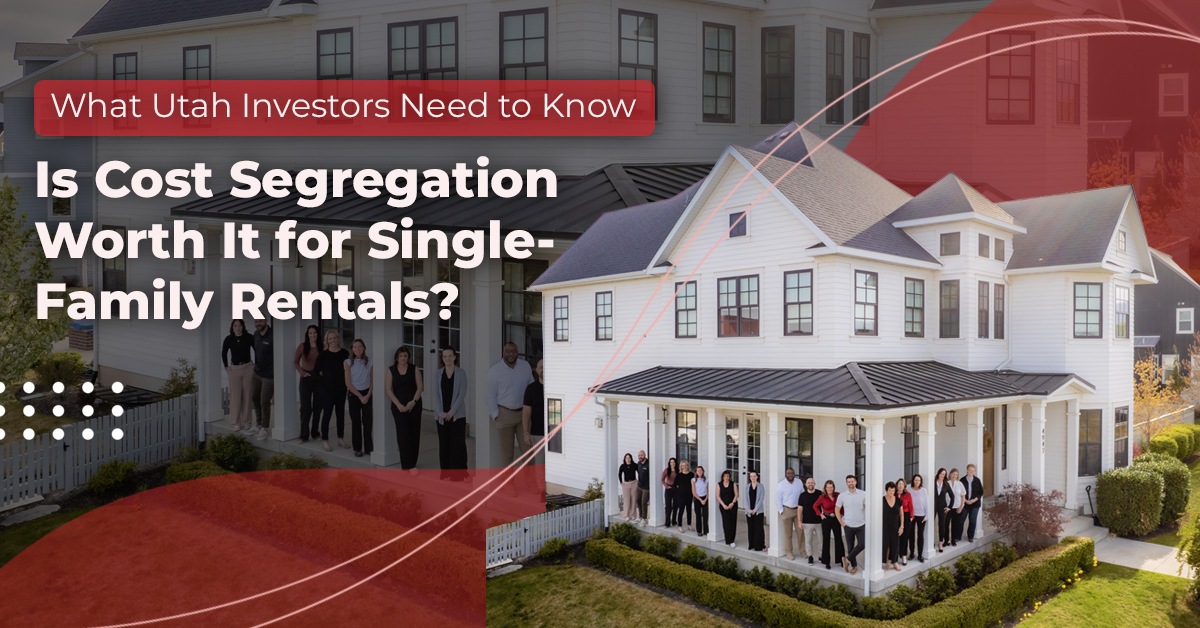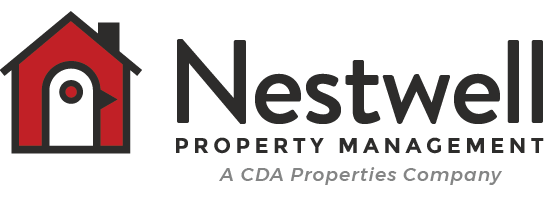Is Cost Segregation Worth It for Single-Family Rentals? What Utah Investors Need to Know

Property Management Utah is about more than just collecting rent—it’s about helping investors unlock every opportunity to grow wealth. One of the most overlooked tools for doing that is cost segregation, a tax strategy that allows you to accelerate depreciation on your rental property. While often associated with large commercial investments, this approach can also benefit owners of single-family rentals across Utah.
In our previous post about cost segregation and hidden cash flow opportunities, we explored how this strategy helps investors front-load depreciation and unlock thousands in tax savings. Today, we’re narrowing the focus to answer the question: Is it worth doing for just one property?
If you’re working with a trusted partner for property management in Utah, the answer might surprise you.
What is Cost Segregation?
Cost segregation is a method of accelerating depreciation by identifying parts of your property that can be depreciated faster than the standard 27.5 years.
For example:
-
Carpet and flooring (5 years)
-
Appliances (5–7 years)
-
Landscaping, fencing (15 years)
By front-loading these deductions, you significantly reduce your taxable income in the early years of ownership—freeing up cash flow to reinvest, upgrade, or expand your portfolio.
Does It Work for Single-Family Rentals?
Short answer: Yes, in the right circumstances.
Many investors think cost segregation only makes sense for large commercial properties, but that’s outdated thinking. With the right analysis and proper support from your property management in Utah, a single-family rental may qualify for thousands in accelerated deductions.
You’ll want to consider:
-
Property value (Typically $300K+ is ideal)
-
Renovation history
-
Long-term hold plans
-
Your current income/tax bracket
Even if you’re only managing one or two properties, if they meet these criteria, cost segregation could give you a serious advantage.
Case Study: Utah SFR Investor Sees $22,000+ in Year 1 Savings
Imagine a Nestwell client who purchases a $450,000 rental home in Saratoga Springs. After removing the land value, they apply cost segregation and identify $100,000 of short-life assets.
With 60% bonus depreciation still available in 2024, they could write off $60,000 in the first year, significantly reducing their taxable income.
That’s $20,000–$25,000 in tax savings, depending on their bracket.
Why Partnering with Property Management in Utah Matters
Cost segregation is a powerful tool—but it works best when your property is well-documented, well-maintained, and professionally managed.
That’s where Nestwell comes in.
Here’s how expert property management in Utah helps investors like you:
-
Maintain accurate records of capital improvements
-
Plan upgrades strategically to increase depreciation value
-
Coordinate with cost segregation providers and CPAs
-
Protect your property’s long-term value while maximizing short-term savings
We don’t just manage homes—we help investors make smart moves that grow wealth.
When Is Cost Segregation Not Worth It?
While it’s a powerful strategy, cost segregation isn’t always the right fit. Here are a few red flags to consider:
-
Property value is under $200K: The tax savings may not outweigh the study costs.
-
Short holding period: If you plan to flip or sell within 1–2 years, recapture tax could eat into your gains.
-
Low tax liability: If your taxable income is already minimal, the benefits of accelerated depreciation may not help much.
-
No recent improvements: Properties with outdated systems or minimal capital expenses often yield smaller benefits.
We recommend consulting with your CPA or tax strategist alongside your property manager to run the numbers before proceeding.
Frequently Asked Questions
Q: How much does a cost segregation study cost for an SFR?
Typically between $2,000 and $5,000 depending on complexity. Nestwell partners with providers who offer discounted or bundled rates for our clients.
Q: What if I’ve owned the property for a few years already?
You can still benefit from a “look-back” study and take a depreciation catch-up in the current year without amending old returns.
Q: Is it risky? Will it trigger an audit?
Not if done correctly. The IRS recognizes cost segregation when supported by a qualified study and documentation.
Bonus Depreciation: Act Now to Maximize Returns
As of 2024, investors can still claim 60% bonus depreciation, allowing significant write-offs in the first year. But this benefit is phasing out by 2027, which means acting now could save you thousands compared to waiting even one more year.
If you’re considering cost segregation for your Utah rental, now’s the time to explore your options.
Final Thoughts
Cost segregation isn’t just for developers or commercial property owners—it’s a smart move for Utah property investors with single-family homes, especially when used alongside professional property management in Utah.
At Nestwell, we help our clients go beyond basic property management. We provide the insights and partnerships needed to unlock long-term wealth through smart investing, tax planning, and expert maintenance.
